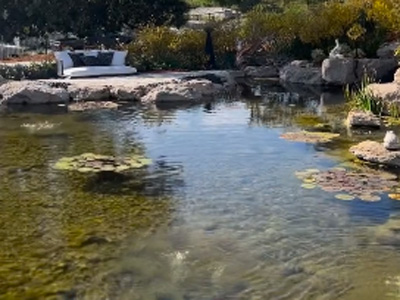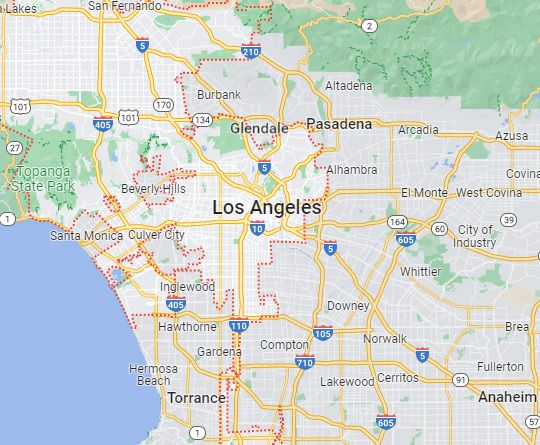Top 10 Koi Pond Myths - Debunked with Facts
 Few features bring the same level of peace and elegance to a garden as a pond filled with vibrant koi fish. These living water elements offer a harmonious blend of motion, color, and sound that can transform the simplest outdoor space. Enthusiasts and beginners alike often feel a sense of awe at the beauty and symbolism these fish represent. Their graceful movements and vivid hues attract attention but also stir curiosity and, unfortunately, plenty of misconceptions.
Few features bring the same level of peace and elegance to a garden as a pond filled with vibrant koi fish. These living water elements offer a harmonious blend of motion, color, and sound that can transform the simplest outdoor space. Enthusiasts and beginners alike often feel a sense of awe at the beauty and symbolism these fish represent. Their graceful movements and vivid hues attract attention but also stir curiosity and, unfortunately, plenty of misconceptions.
Misinformation spreads quickly, especially among those new to pond care or planning their first aquatic addition. Over time, these myths can shape decisions about design, water treatment, fish health, and regular upkeep. Relying on misleading ideas might lead to poor choices, unnecessary expenses, or missed opportunities to enjoy a koi pond's full potential. Mystic Water Gardens helps homeowners bring these serene aquatic environments to life with expert design and personalized care.
Common Myths and the Real Facts Behind Them
Myths surrounding these ponds can discourage newcomers or lead seasoned hobbyists in the wrong direction. Here are ten of the most common misconceptions, clarified with facts:1. They Require Expensive, High-Maintenance Setups
While these fish need a healthy environment, they thrive in a wide range of pond designs when supported by proper planning. A balanced filtration system, sufficient depth, and regular water checks help maintain a stable environment without incurring excessive costs. Many hobbyists succeed with modest, well-thought-out systems.
2. These Fish Cannot Survive Cold Winters
Despite their delicate appearance, they handle seasonal changes quite well. In colder regions, they enter a semi-dormant state if the water body is deep enough to avoid freezing solids. A pond heater or aerator can maintain a small opening in the ice, allowing for gas exchange and ensuring their survival through the coldest months.
3. Clear Water Means Healthy Water
Water that looks clean may still contain harmful substances. Ammonia, nitrites, and pH imbalances are invisible to the eye but can harm aquatic life. Regular testing is essential to monitor water quality. A pond that appears pristine may still need adjustments to remain safe and supportive.
4. These Fish Destroy Aquatic Plants
While they may occasionally nibble, they rarely damage a thoughtfully planted water garden. Selecting hardy species such as water lilies, lotus, and submerged oxygenators keeps the space visually appealing and functional. Planting baskets or pots further protects greenery from excessive foraging.
5. Feeding Should Happen Daily Year-Round
Their metabolism slows in colder temperatures, making digestion difficult. In warmer months, consistent feeding promotes growth and color enhancement; however, during colder periods, feeding should be stopped once water temperatures drop below 50°F (10°C). Seasonal feeding patterns align with their natural rhythms and support long-term health.
6. Ponds Attract Mosquitoes
Mosquitoes prefer stagnant water for laying eggs. A properly maintained pond with a pump, waterfall, or fountain creates continuous movement, making it inhospitable for larvae. Fish also consume insect larvae, naturally reducing mosquito populations.
7. Larger Fish Always Bully Smaller Ones
Koi varieties are typically peaceful by nature and coexist without issues. Providing ample space and shelter helps smaller or newer additions feel secure. Group dynamics usually stabilize quickly, with minimal signs of aggression.
8. The Water Feature Needs Frequent Draining and Cleaning
Draining too often disrupts beneficial bacteria and stresses the aquatic environment. Partial water changes performed every few weeks, along with consistent filtration and debris removal, help maintain balance. Routine upkeep of skimmers and filters proves more effective than full cleanouts.
9. UV Lights Are Dangerous for The Fish
UV clarifiers expose water to light inside a sealed chamber to control algae. The light never directly touches the fish, making it completely safe. These systems improve clarity without harming aquatic life or disturbing beneficial surface bacteria.
10. They Outgrow Their Environment Quickly
While these fish can grow quite large, they do so gradually. Their growth rate depends on genetics, diet, and the size of the water body. A depth of at least three feet and adequate space are essential for healthy development over time, without the need for frequent relocation.
Shape a Healthier Understanding of Aquatic Living
Approaching pond care with the correct information makes the experience far more rewarding. Accurate knowledge builds confidence and improves decisions, from system design to daily routines. A thriving ecosystem thrives, lending calmness, beauty, and a deeper connection to the entire garden.For information on our koi ponds and other services, call Mystic Water Gardens on 818-424-6836. Alternatively, you can fill out this Online Form, and one of our experts will get back to you shortly.
Back to Blog Page


